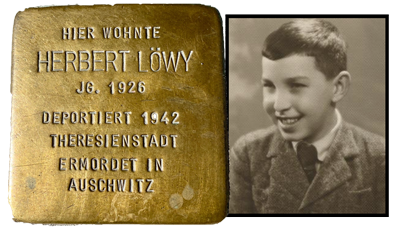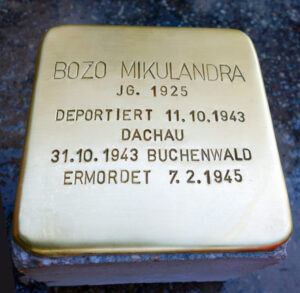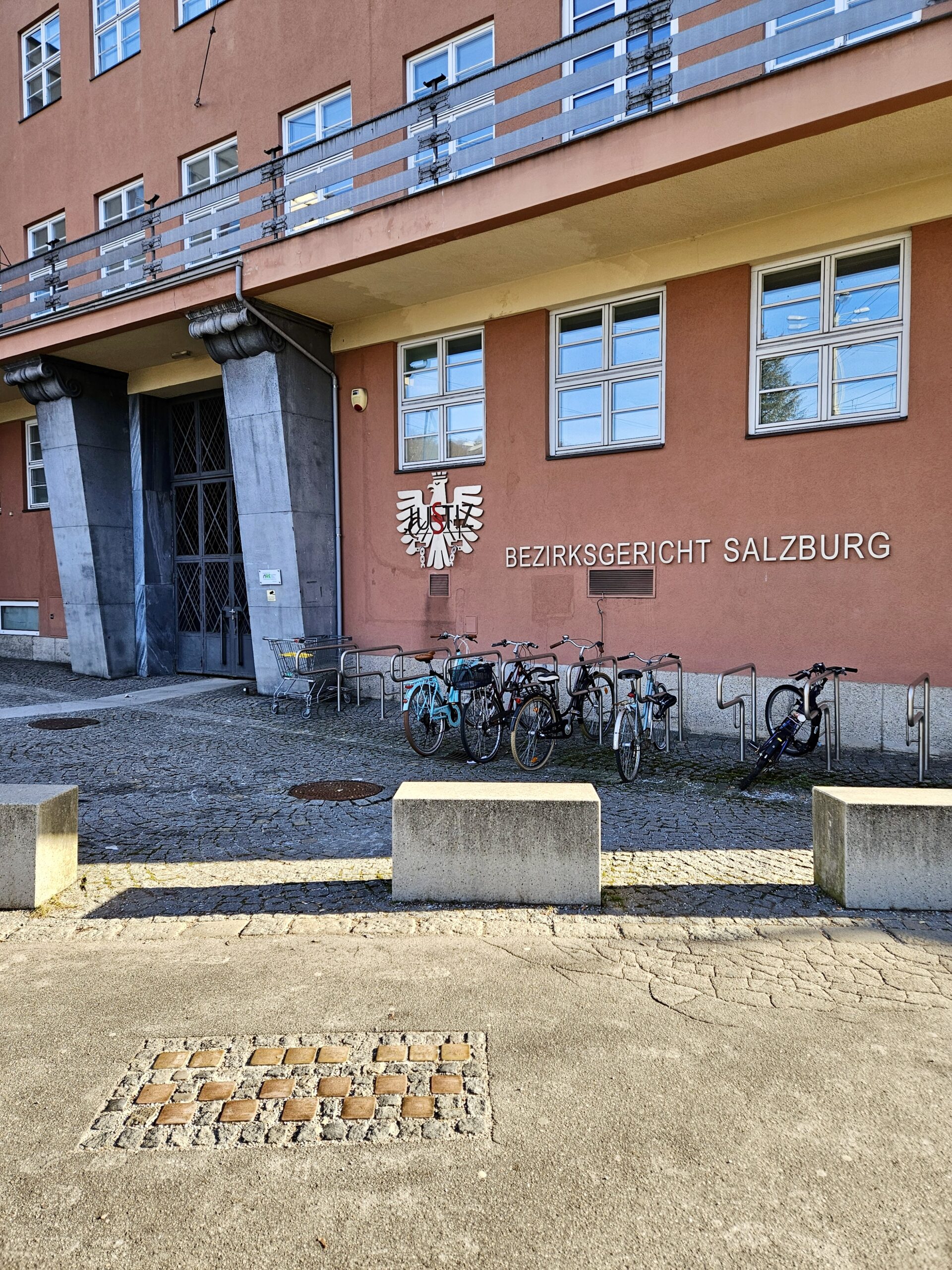Bozo MIKULANDRA and Wladimir SUBOTA were two terror victims who were never included in either the Salzburg police registration files or in the book Widerstand und Verfolgung in Salzburg 1934-1945 (Resistance and Persecution in Salzburg 1934-1945) that was published in 1991.
But, the prisoner cards of the »SS Main Economic and Administrative Office« [the SS organization responsible for managing the finances, supply systems and business projects for the SS which also ran the concentration camps and was instrumental in the implementation of the Final Solution] show that both of them were imprisoned in the police jail on the Rudolfsplatz (which was called Georg-von-Schonerer-Platz under the Nazi regime ) – presumably for offenses that were most often punished by the Gestapo: refusal to work, flight and »anti-state behavior«.
Wladimir (Wolodymyr) SUBOTA was born in Bashtanka Ukraine on January 1, 1924 and in 1942 he was conscripted as a forced laborer to work in the Third Reich. As such he had to wear a patch on his left breast saying »OST«, meaning he was a forced laborer from the East.
He was still only 18 when the Salzburg Gestapo deported him in a special transport of »Russian« prisoners (mostly Ukrainians) to the Dachau concentration camp.
On August 8, 1942 he was registered there as »protective custody prisoner« number 33707 and he was murdered there on February 12, 1945.
On October 11, 1943 the Gestapo deported more than 50 Yugoslavian prisoners from the Salzburg police jail to the Dachau concentration camp. Bozo MIKULANDRA was one of them. He had been born in Bilice (Šibenik-Knin County), Croatia on September 18, 1925 and was also just 18 when he was registered in Dachau as Yugoslavian »protective custody prisoner« number 56345.
On October 31, 1943 he was transferred to the Buchenwald concentration camp, prisoner number 35539, and he was murdered there on February 7, 1945. Bozo MIKULANDRA and Wladimir SUBOTA were 19 and 21years old when they were killed and stand for the uncounted and nameless terror victims from Yugoslavia and the Soviet Union.
While the victims are often nameless, the perpetrators have names and faces. Some have long appeared in »Wikipedia«. Dr. Humbert Achamer-Pifrader for example: he was an Austrian attorney and police officer in Salzburg until he was expelled for illegal Nazi activities in 1935 and fled to Germany where he made a police and SS career – as an SS-Standartenführer (colonel) he commanded »Einsatzgruppe A« which was responsible for numerous massacres of Jewish civilians in the Soviet Union.
We can also find other perpetrators in »Wikipedia« who had Salzburg connections like Herbert Andorfer, for example, who was commander of the Sajmište concentration camp near Belgrad – where some 7,000 Jewish prisoners, mostly women and children, were murdered in a gas wagon. [See Walter Manoschek, »Serbien ist judenfrei!« (»Serbia is Jew Free«), Munich, 1993, 169ff].
SS-Obersturmführer (1st Lieutenant ) Andorfer managed to escape and hide in Venezuela. But when he returned to Germany he was convicted in the Dortmund State Court for his crimes as commander of the Sajmište concentration camp and sentenced to 30 months imprisonment (2 ½ years for 7,000 murders).
But neither in Germany nor in Austria was he ever tried for his crimes as Commander of SS »Kommando Andorfer« in Veneto and Bassano del Grappa. Herbert Andorfer, had begun his SS-career in Salzburg’s SS-Standarte 76 (his family had local citizenship in Salzburg) and after he was released for prison in Germany he returned to Salzburg, where he lived undisturbed until his death at age 92 on October 17, 2003. His grave is in the Salzburg municipal cemetery.
Only a shadow of a memory remains of the Austrian Freedom Battalion that fought in Yugoslavia against the Wehrmacht and SS: it included fourteen activists from Salzburg city and state whose names are known, but only three of them (Ernst Kindlinger, Georg Madreiter and Rudolf Weindlmayr) were officially recognized as »victims in the fight for a free democratic Austria«, although the passage on »armed struggle« in the Victims’ Compensation Law of 1947 describes the fighters of the Austrian Freedom Battalion precisely.
Sources
- Prisoner cards of the SS (Gestapo Salzburg)
Translation: Stan Nadel
Stumbling Stone
Laid 28.09.2017 at Salzburg, Rudolfsplatz 3





